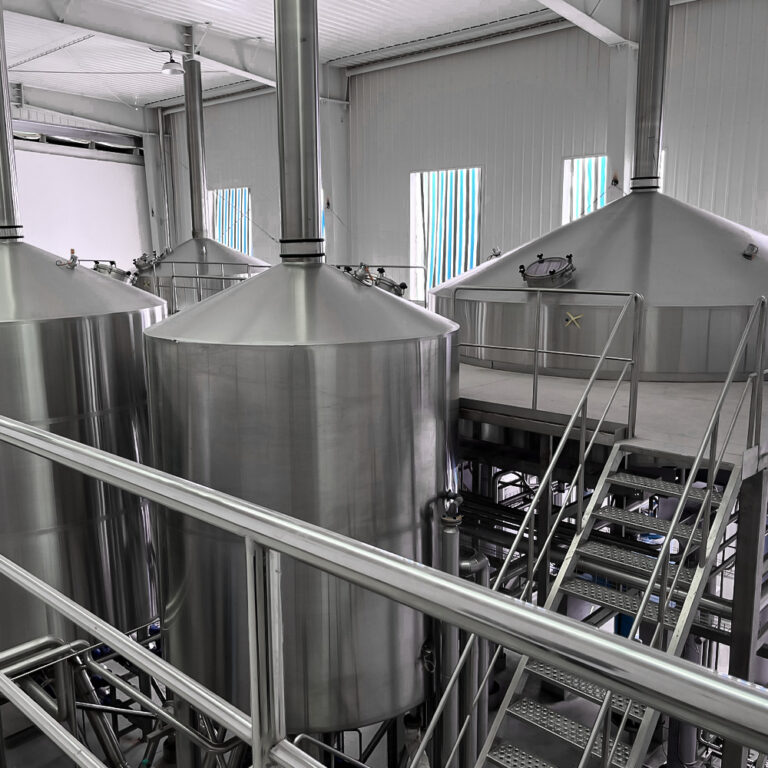Components
Cold liquor tank*1 set
Heat exchanger*1 set
Matching pumps, valves, pipes, sensors, etc.
Process Parameters
Supply temperature: 1-3℃ Supply pressure: 3-4 bar
Key Features
- Cooling method: Cold water preparation allows for the use of various cooling methods, including plate heat exchanger cooling, dimple jacket cooling, coil cooling inside the tank, and so forth. This ensures the cold water supply volume and temperature.
- Isobaric supply: Use a pressure variable frequency pump or a centrifugal pump with a pressure sensor to control the pump outlet supply pressure, and to ensure constant water supply pressure.
Configuration Features
- Material: We chose big brands 304 stainless steel plates because of their acid and corrosion resistance, long-term high-temperature resistance, and reliable and guaranteed quality.
- Cleaning System: The automatic CIP System and high-quality rotary cleaning ball in this tank ensure there is no dead space, which is essential to maintaining the hygiene of the brewing process.
- Sanitary pipeline, high polishing precision, no dead ends to minimize the risk of bacterial build-up
- Our high-quality stainless steel valves include butterfly valves, angle seat valves, and diaphragm valves. They are equipped with imported valve cores that provide excellent resistance to acid and alkali corrosion, and high and low temperatures. These valves meet the highest health standards.
- Welding: The welding process uses automatic equipment to maintain a consistent temperature, reduce oxidation, and prevent ferrite precipitation. This ensures a smooth weld with high fusion and meets hygiene standards.
- All welds undergo multi-stage mechanical polishing and pickling passivation to achieve a polished inner surface with a degree of less than 0.4 microns, meeting high hygienic standards.
- Motor: Using world-renowned brand motor reducer, with reliable quality and long service life
- Insulation: We use polyurethane thermal insulation, with a density of 40 ± kg/m³ and excellent thermal insulation performance.


